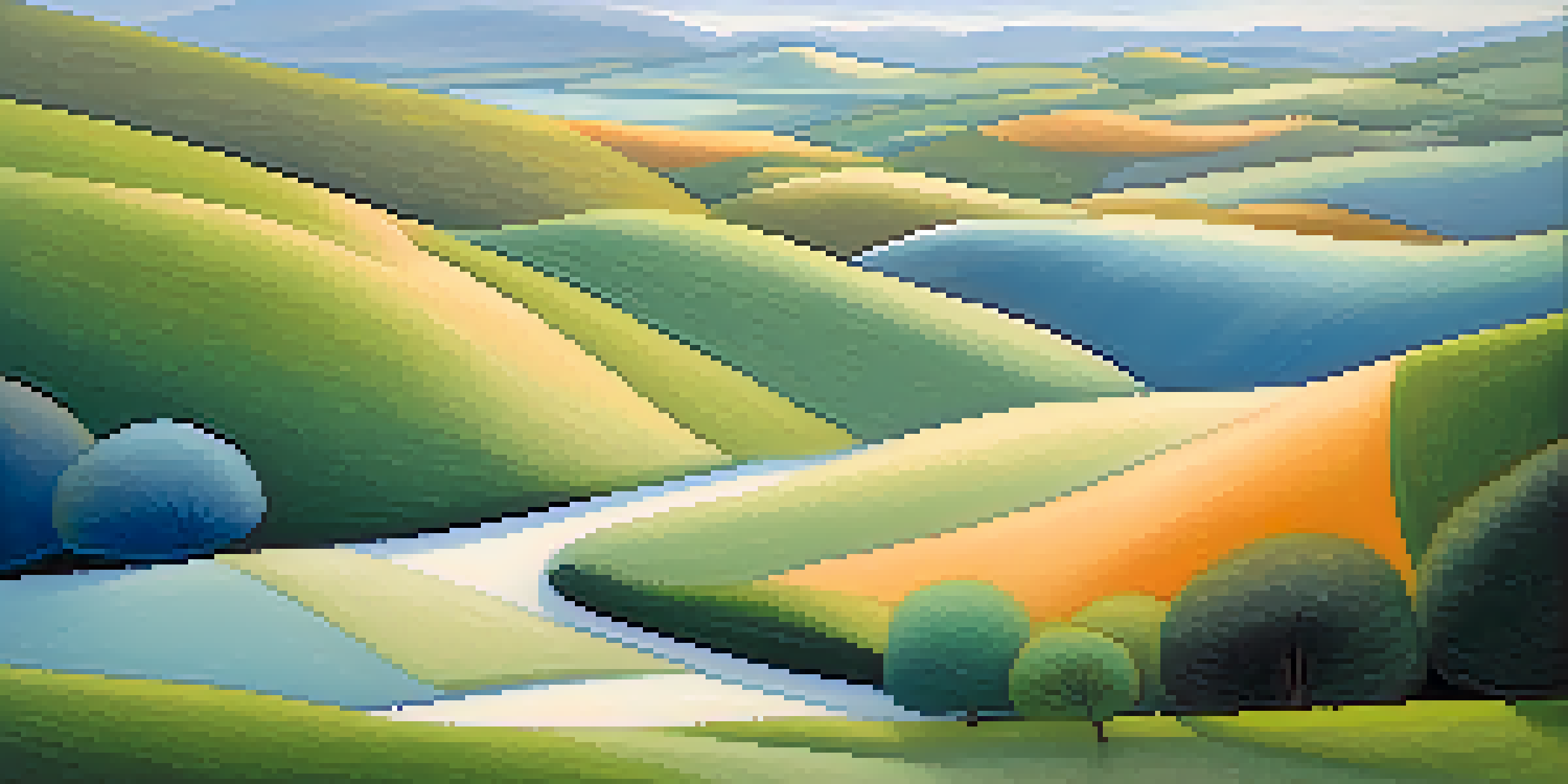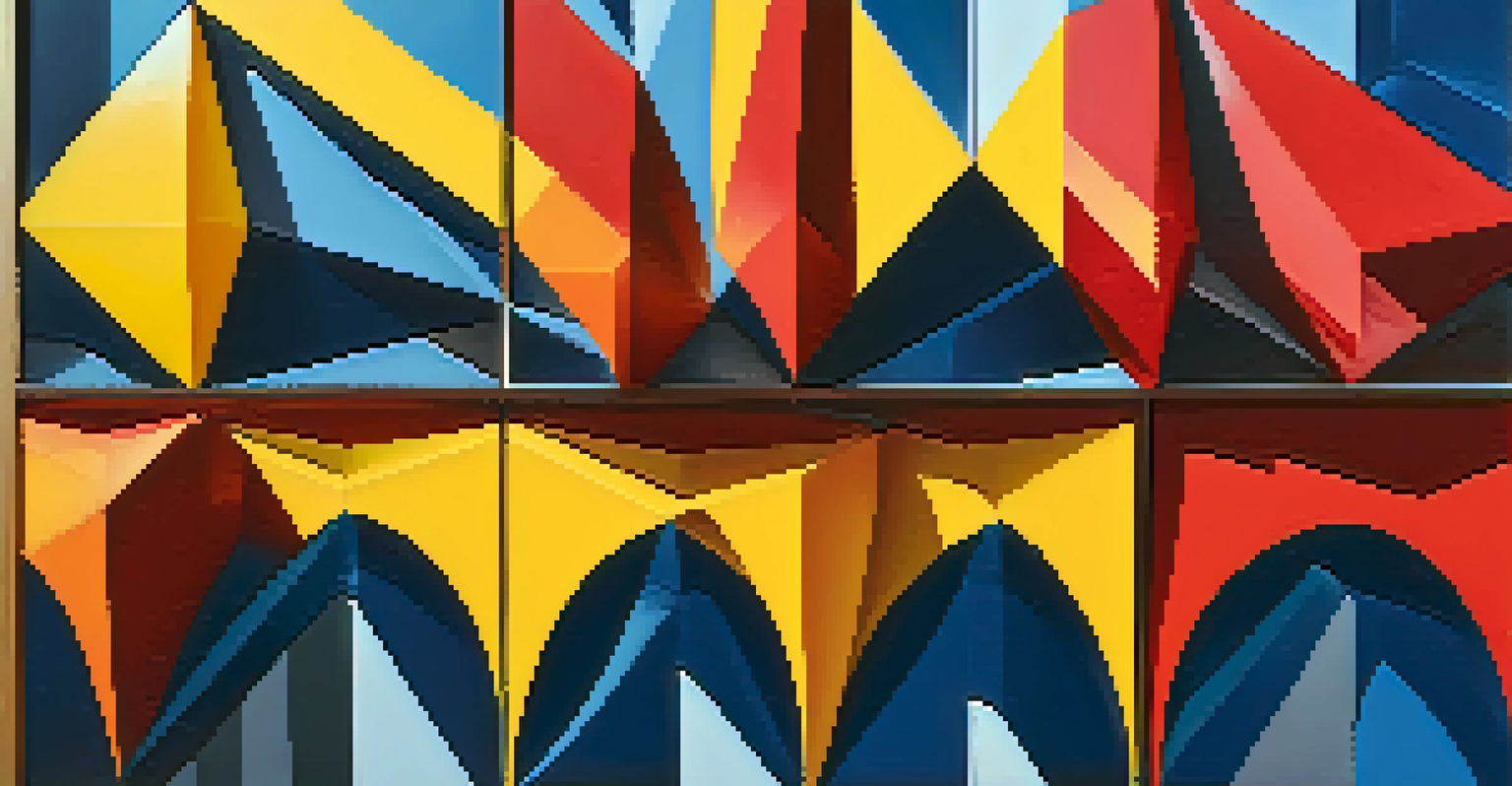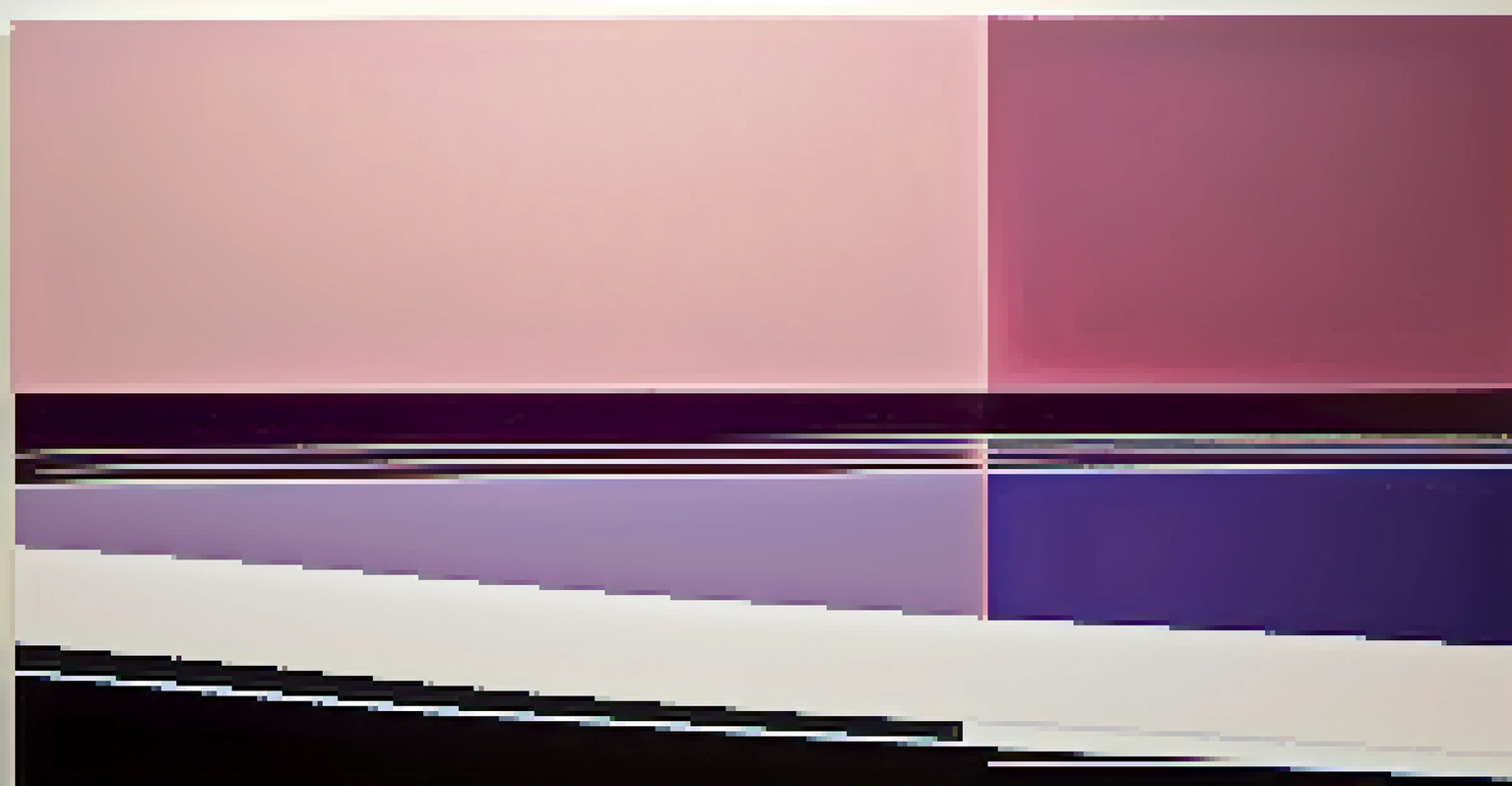Abstract Art: Understanding the Emotional Impact of Abstraction

What is Abstract Art and Its Origins
Abstract art breaks away from traditional representation, focusing instead on colors, shapes, and forms. It emerged in the early 20th century as artists sought to express more than what the eye could see. By stripping away recognizable subjects, abstract art invites viewers to interpret emotions and ideas on their own terms.
Abstract art enables the viewer to see the world through the artist's eyes, creating a personal connection that transcends traditional boundaries.
Pioneers like Wassily Kandinsky and Piet Mondrian led the way, emphasizing the power of visual language over literal representation. Their works encouraged viewers to engage with art on a personal level, fostering a unique emotional connection. This shift marked a significant departure from the conventions of realism.
Related Resource
As abstract art evolved, it incorporated various styles and movements like Cubism and Surrealism, each adding new dimensions to emotional expression. Today, it continues to challenge our perceptions, often provoking feelings that are difficult to articulate.
The Emotional Language of Colors in Abstraction
Colors play a pivotal role in abstract art, serving as a powerful emotional language. For instance, warm colors like red and orange can evoke feelings of passion or excitement, while cool colors such as blue and green often bring about calmness and tranquility. This color psychology is a fundamental aspect of how we interpret abstract artworks.

Artists intentionally choose color palettes to communicate specific emotions, allowing viewers to experience a spectrum of feelings. Take Mark Rothko's large color fields, which aim to elicit deep emotional responses through simple yet profound color combinations. The emotional weight carried by these colors invites introspection.
Abstract Art's Emotional Depth
Abstract art invites personal interpretation, allowing viewers to engage with their emotions in a unique and meaningful way.
Moreover, the emotional impact of color can vary greatly among individuals based on personal experiences and cultural backgrounds. This subjectivity is what makes abstract art so engaging; it allows everyone to find their own narrative within a piece.
Forms and Shapes: Conveying Feelings in Abstraction
Beyond color, the forms and shapes used in abstract art also communicate emotions. Geometric shapes can convey order and stability, while organic, flowing forms might suggest movement and freedom. Artists deftly manipulate these elements to evoke specific feelings within the viewer.
Color is the keyboard, the eyes are the harmonies, the soul is the piano with many strings.
For example, the sharp angles and stark lines in a piece might provoke feelings of tension or unease, while softer, curved shapes can inspire a sense of comfort or peace. This interplay between form and emotion makes each piece of abstract art a unique experience.
Related Resource
The abstraction of form allows artists to explore complex emotions that might be difficult to express through traditional means. As viewers, we are invited to interpret these shapes, finding personal meaning and resonance in the artwork.
The Viewer’s Role in Experiencing Abstract Art
One of the most fascinating aspects of abstract art is the active role of the viewer. Unlike representational art, where meaning may be more explicit, abstract art relies on personal interpretation. This means that each viewer brings their own emotions, experiences, and perspectives to the artwork.
As you stand before an abstract piece, you might feel a rush of nostalgia or a sense of calm, which reflects your personal journey. This interaction transforms the viewing experience into a dialogue between the artwork and the observer, creating a unique emotional exchange.
The Power of Color in Art
Colors in abstract art serve as a powerful emotional language, evoking feelings that resonate differently with each individual.
In this way, abstract art becomes a mirror of sorts, reflecting our inner emotions and thoughts. It's a reminder that art is not just about the artist's intention, but also about how we connect with it on an emotional level.
The Therapeutic Benefits of Engaging with Abstract Art
Engaging with abstract art can have therapeutic benefits, offering a space for reflection and emotional exploration. Many people find that viewing or creating abstract art helps them process complex feelings and experiences. It can serve as a form of emotional release or a means of exploring one's inner world.
Art therapy often employs abstract art techniques, encouraging individuals to express themselves without the constraints of realism. This practice allows for a more profound exploration of emotions, making it a powerful tool for personal growth.
Related Resource
Furthermore, the act of creating abstract art can be incredibly liberating. It allows individuals to let go of expectations and judgments, fostering a sense of freedom and creativity that can lead to emotional healing.
The Influence of Abstract Art on Modern Culture
Abstract art has significantly influenced modern culture, permeating various aspects of visual design, fashion, and even architecture. Its emphasis on emotion and personal interpretation has inspired a generation of artists and designers to think outside the box. This cultural shift encourages creativity and innovation across multiple fields.
Moreover, abstract art challenges viewers to question their perceptions and the world around them. This questioning spirit is essential in today’s society, where understanding and empathy are more crucial than ever. By engaging with abstract art, we open ourselves up to new ways of thinking and feeling.
Viewer's Role in Interpretation
The viewer's personal experiences shape the interpretation of abstract art, transforming the experience into a unique emotional dialogue.
As we embrace the influence of abstract art, we also acknowledge its ability to inspire dialogue and connection among diverse audiences. It serves as a reminder that art is a universal language, capable of transcending boundaries and fostering a sense of community.
Conclusion: Embracing the Emotional Journey of Abstraction
In conclusion, abstract art offers a profound emotional journey that invites us to explore our feelings in unique ways. Its reliance on color, form, and viewer interpretation creates a rich tapestry of emotional experiences that can resonate deeply with individuals. By engaging with abstract art, we not only understand the artist's vision but also uncover layers of meaning within ourselves.
This emotional exploration encourages us to embrace vulnerability and reflect on our personal narratives. As we allow ourselves to feel and interpret the artwork, we cultivate a deeper appreciation for the complexities of human emotion.

Ultimately, abstract art serves as a powerful reminder of the myriad ways we can connect with our feelings and those of others. It challenges us to look beyond the surface, inviting a conversation that enriches our understanding of the world and ourselves.